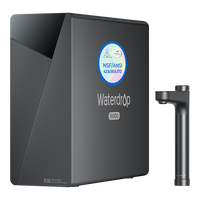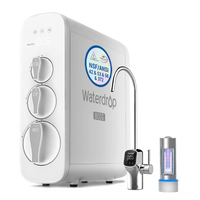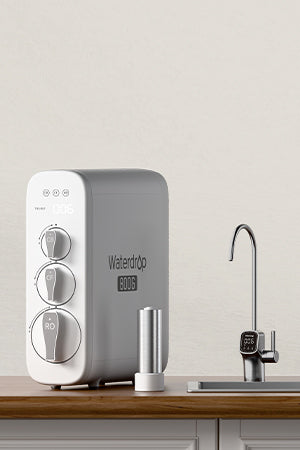If the data from the Wisconsin Legislative Fiscal Bureau is anything to go by, then Wisconsin is in line to be a beneficiary of US$347 million as clean water funding, and a separate US$522 million as safe drinking water revolving loans. All of these are expected to happen within the next five years.
These fundings means millions of people living in Wisconsin can now access clean water. But that is just the summary. Read on to learn more about this incoming Wisconsin water infrastructure.
What Is Water Infrastructure
Generally, we can describe infrastructure as an essential criterion for material production and labor reproduction. Social projects that revolve around the renovating or transforming existing infrastructures or building new ones from scratch are collectively called infrastructure construction.
The general public cannot see much of the drinking water infrastructure. For instance, people only see their utilities provide high quality water, no one sees the treatment part that ensures that the water conforms to public health and safety standards. The PSC’s regulatory activities helps to strike an healthy balance between costs and the quality of infrastructure projects and utility operations.
The list of infrastructure activities is long, and notably includes the approval of construction projects, utility organizational transactions, ensuring adherence to statutes, codes, and tariffs associated with infrastructure and municipal authority.
Why Water Infrastructure Is Important
Water resources bring about development. We cannot break the poverty cycle without adequate investment in water resources and construction of water and sanitation facilities. However, this requires planning ahead. If properly done, these plans can improve productivity on actualization, helping the community and the country grow.
The World Health Organization (WHO) identifies water as a prerequisite for all forms of development. The effect of water infrastructure on public health is direct and apparent. A fully functional water infrastructure ensures everyone gets safe drinking water, while keeping water pollution in streams and rivers very minimal. The reverse is the case in the event of an inadequate or poorly-maintained water infrastructure.
Main Components of the Wisconsin Water Infrastructure
Wisconsin hopes to invest the new federal funding into three primary water safety concerns, which are nitrates, lead, and PFAS.
PFAS
PFAS are artificial chemicals present in different products, such as non-stick cookware, anti-fouling sprays, fast food wrappers, and a few kinds of fire-fighting foams. The industrial and commercial application of these chemicals is well-established, since their discovery in the mid-twentieth century.
These chemicals hardly leave the environment once they enter, hence the name “forever chemicals.” They are non-degradable, and when they eventually get into the human body, they accumulate in our organs where they cause serious problems. For instance, PFAs are the leading cause of cancer, delays in development, and heart problems.
Lead
Lead found early applications in home water pipe construction, as well as in building underground water distribution systems. Lead solder is a regular feature in brass or chrome-plated brass plumbing fixtures. However, on exposure to water, the lead present in these pipes corrode and dissolve in water. The effects are more pronounced in acidic water.
Lead has been identified as a major toxin, capable of causing neurological and physical issues. Young children are even at higher risks of severe health conditions with lead contamination. Furthermore, Wisconsin currently has over 170,000 lead service lines. These lines must be replaced; otherwise, they cause serious problems for families who drink water from these pipes.
Some of the dangerous health problems associated with lead include brain damage, especially in young children. You can read more on how to
Protect Children from Lead Exposure in Drinking Water here.
Nitrates
The colorless, odorless, and tasteless nature of nitrates makes them undetectable in water. The only way to detect nitrates is to test your water samples in the laboratory. If present in high amounts in water, nitrates can cause severe and even fatal illnesses in some cases. The risks are higher in babies, children, and adults with existing enzyme deficiency. A depleted stomach acid level is another reason an individual may be more susceptible to the adverse effects of nitrates.
Once nitrates enter into the body, they become nitrites. The Wisconsin’s Groundwater Coordinating Council has identified nitrates as the most widespread groundwater pollutant in the area. The situation is becoming worse, with increasing level and spread of nitrate pollution in Wisconsin’s groundwater.
Nitrate is a major cause for concern in 74 drinking water systems, with over 10% of private wells in Wisconsin suspected to contain unsafe levels of nitrate.
How Can You Filter Water At Home
Here are a few ways to filter water at home.
Boiling
Boiling is a simple and effective water purification method. Boiling your water will kill the pathogenic bacteria, protozoa, and viruses in water. That said, PFAS and lead are immune to boiling. Instead, boiling concentrates them.
Distillation
Distillation produces distilled water – the process entails boiling pure water out of its contaminants. If you want to remove contaminants from your drinking water, you should distill them. However, distilled water lacks beneficial materials. So, it is not ideal for long-term consumption except your doctor advises otherwise.
Read more here.
Reverse Osmosis
Reverse osmosis is a filtration technology that removes most contaminants from water. It achieves separation by pushing the water molecules via a semi-permeable membrane under high pressure. The specialized membrane has microscopic pores that ensure that all molecules bigger than 0.0001 micron do not pass through it.
The reverse osmosis filtration process leaves you with great-tasting water, and ensures your family can get cleaner and safer water at all times.
G3 Reverse Osmosis Water Filter System
- NSF 58 & 372 Certified
The Waterdrop G3 RO system has undergone over 400 chemical lab tests to confirm that it contains no chemical substances. The product is tested and certified against NSF/ANSI standard 58. This confirms its effectiveness against more than 90% of TDS in your drinking water.
- 7-Stage Deep Filtration
You can trust this
under sink water filter system to effectively reduce impurities like rust, sand, odor, taste, solids, and chlorine in your drinking water. The filtered water is free of harmful substances and 100% safe for drinking. But that’s not all; it also makes the water taste better, thanks to the coconut block made from coconut shell. Now you can enjoy fresh, great-tasting, and healthy drinking water every time.
Conclusion
The importance of an adequate water infrastructure in our lives cannot be overemphasized. It ensures the water at our disposal is safe and healthy at all times. But in the absence of an excellent water infrastructure, using the right water filter system will provide you with higher quality drinking water.







































































